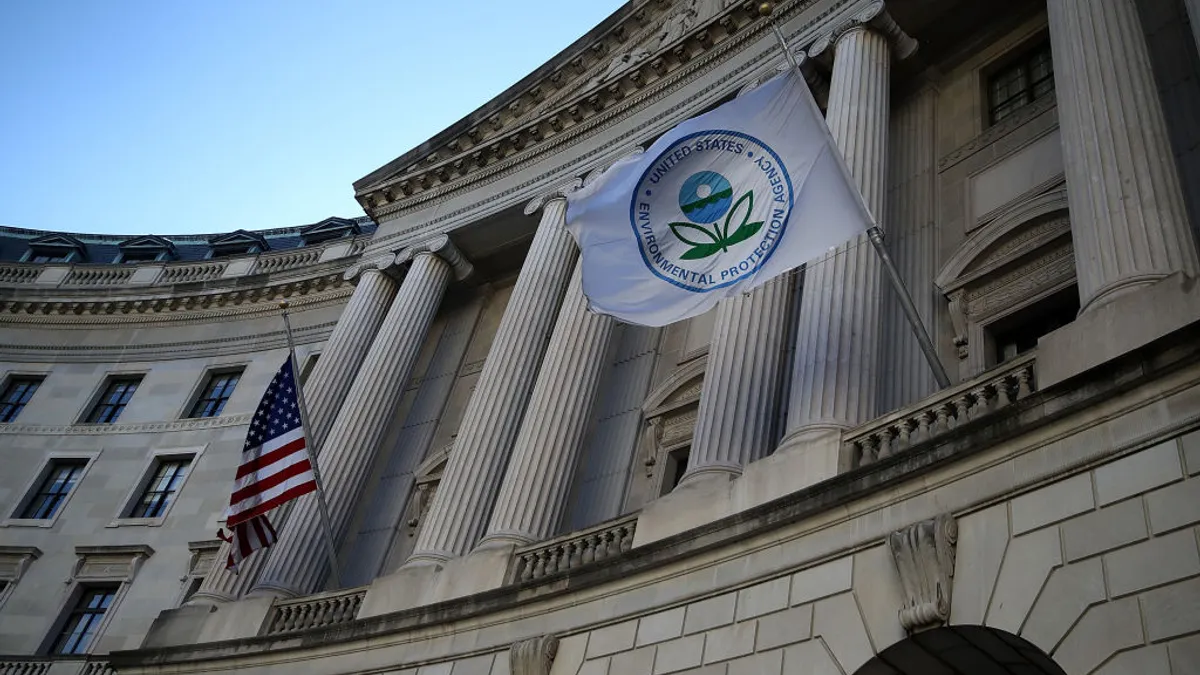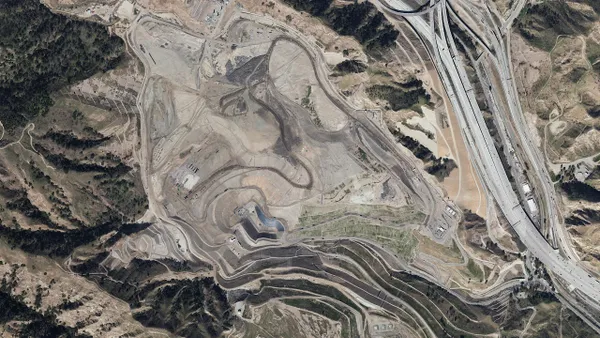Dive Brief:
- The U.S. EPA’s National Enforcement and Compliance Initiatives for the 2024-2027 period include multiple focus areas relevant to the waste industry. The updated initiatives are a part of a standard process to help the EPA and state environmental agencies prioritize enforcement efforts.
- Under a new enforcement goal of “mitigating climate change,” the agency lists methane emissions from landfills as a key focus area. Landfills were not part of the agency’s last enforcement priority update in 2019.
- Other new enforcement areas include “addressing exposure to PFAS,” with a mention of “industrial parties who significantly contributed to the release of PFAS into the environment. “Protecting communities from coal ash contamination” is another new area, with a mention of coal combustion residuals at on-site landfills.
Dive Insight:
The EPA said it used multiple criteria to select this latest list, including guidance from its strategic plan that has a focus on climate and environmental justice considerations. Additional focus areas through 2027 cover hazardous air pollutants in overburdened communities, drinking water standards and chemical accident risk reduction.
“EPA’s new national initiatives address urgent 21st century environmental problems, while upholding the rule of law to level the playing field for law-abiding companies and promoting a sustainable future for our children and grandchildren,” said Assistant Administrator for Enforcement and Compliance Assurance David Uhlmann in a statement.
The agency’s focus on landfill emissions is the latest in a series of related efforts from the Biden administration. In 2021, the EPA finalized an Obama-era rule that implemented new emissions requirements on certain categories of landfills after it got delayed and tied up in court during the Trump years. In 2022, as part of a broader focus on methane, the agency set a voluntary target to achieve a gas capture and flare rate of 70% for all landfills — which it said would be a 12% increase from levels at the time.
The latest EPA data, from 2021, showed that landfills remain the third-largest source of methane emissions in the U.S. The agency also recently agreed to update its landfill emissions methodology for the first time in decades, following a legal settlement.
The new enforcement initiative on climate mitigation, described as an “urgent priority,” also includes emissions from oil and gas facilities, as well as hydrofluorocarbons. The EPA said it has “documented widespread noncompliance in all three of these areas, resulting in potentially tens of thousands of tons of unlawful emissions of greenhouse gases and other pollutants.” A recent memo from Uhlmann to regional administrators indicates the landfill focus will include enforcing the agency’s New Source Performance Standards.
EPA solicited public comment on the proposed enforcement plan earlier this year and records don’t show any direct reaction from waste industry groups on the landfill emissions focus. Industry representatives did have comments about the agency’s enforcement plans for per- and polyfluoroalkyl substances.
A joint comment from the National Waste & Recycling Association and Solid Waste Association of North America said the groups generally supported an enforcement focus on PFAS, but urged the agency to look upstream at manufacturers rather than “passive receivers” such as waste sites. This is part of a broader effort by the industry to avoid potential liability as the EPA moves to designate certain chemicals in this category as hazardous.
In a similar vein, the City of New York’s Law Department called for the agency not to penalize passive receivers of PFAS. It said “the recent heightened regulation of PFAS increases uncertainty for the City’s efforts to close former landfills,” including the Department of Sanitation’s Fresh Kills Landfill and Edgemere Landfill.
This announcement is a common part of EPA’s future planning that often spans presidential administrations. The EPA notes its latest set of initiatives builds on ones to target drinking water standards and chemical accident prevention that were set by prior administrations. When the agency last updated its enforcement initiatives, in 2019, the only specific waste sector item was “reducing hazardous air emissions from hazardous waste facilities.” That category is not listed in the agency’s latest list of priorities.














